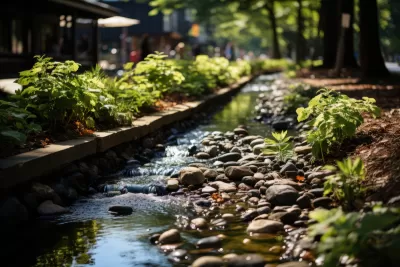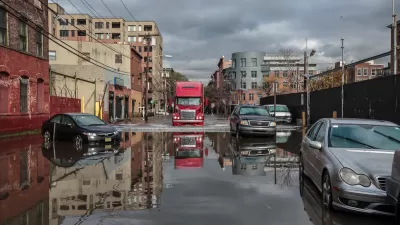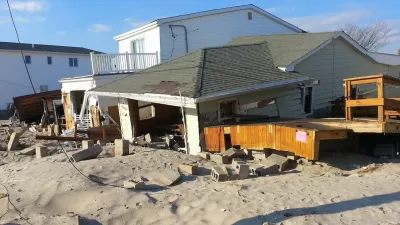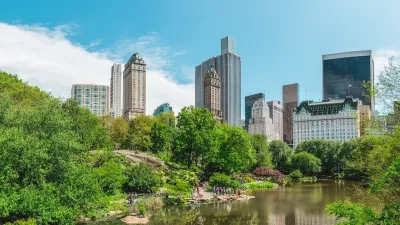A new loan program reduces the bureaucratic hurdles to implementing small-scale climate adaptation projects.

An article by Jake Bittle in Grist describes a new loan program for climate adaptation projects that specifically aims to support small-scale projects in smaller towns and tribal communities. “This way, not only can local officials representing small towns, minor cities, and tribes skip the extensive application process associated with federal grants, but they also don’t have to justify their projects in cost-benefit terms.”
The program could help speed up smaller adaptation projects that could have a significant impact on their community’s ability to withstand extreme weather events and climate change, reducing the red tape that communities must navigate for most federal grant or loan programs. Bittle explains that “Because states themselves will be running the loan programs, rather than the federal government, borrowers won’t have to worry about following the extensive federal spending guidelines that often hamper adaptation projects, or about passing a strict cost-benefit analysis.
According to Bittle, “The agency is piloting the program by sending $50 million in ‘seed capital’ to seven states — Louisiana, Maryland, Michigan, New Jersey, New York, South Carolina, and Virginia — as well as Washington, D.C. The states will get about $6 million each, and they’ll be able to loan that money out to smaller governments at interest rates of less than 1 percent.”
FULL STORY: FEMA rolls out climate adaptation loans for small and overlooked communities

Maui's Vacation Rental Debate Turns Ugly
Verbal attacks, misinformation campaigns and fistfights plague a high-stakes debate to convert thousands of vacation rentals into long-term housing.

Planetizen Federal Action Tracker
A weekly monitor of how Trump’s orders and actions are impacting planners and planning in America.

Chicago’s Ghost Rails
Just beneath the surface of the modern city lie the remnants of its expansive early 20th-century streetcar system.

Bend, Oregon Zoning Reforms Prioritize Small-Scale Housing
The city altered its zoning code to allow multi-family housing and eliminated parking mandates citywide.

Amtrak Cutting Jobs, Funding to High-Speed Rail
The agency plans to cut 10 percent of its workforce and has confirmed it will not fund new high-speed rail projects.

LA Denies Basic Services to Unhoused Residents
The city has repeatedly failed to respond to requests for trash pickup at encampment sites, and eliminated a program that provided mobile showers and toilets.
Urban Design for Planners 1: Software Tools
This six-course series explores essential urban design concepts using open source software and equips planners with the tools they need to participate fully in the urban design process.
Planning for Universal Design
Learn the tools for implementing Universal Design in planning regulations.
planning NEXT
Appalachian Highlands Housing Partners
Mpact (founded as Rail~Volution)
City of Camden Redevelopment Agency
City of Astoria
City of Portland
City of Laramie





























